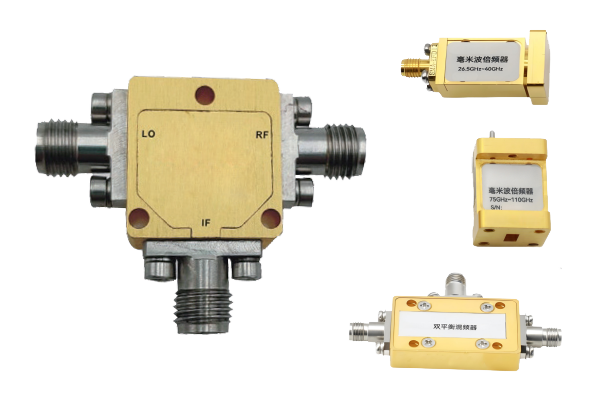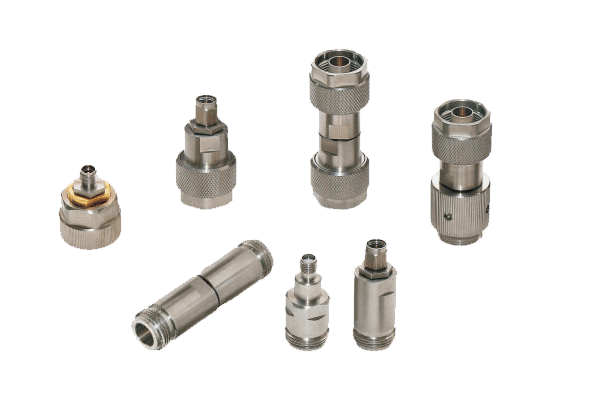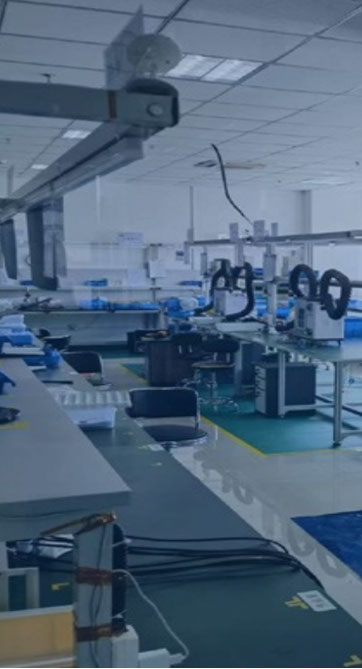
Pin diodes are widely recognized as vital components in RF systems because of their intrinsic functional attributes Their quick conductive to nonconductive switching and compact capacitance with limited insertion loss make them perfect for switches modulators and attenuators. The fundamental operating principle of PIN diode switching rests on adjusting current flow with a control bias. A change in bias voltage transforms the depletion-region width of the p–n junction, affecting conductance. Adjusting the bias enables PIN diodes to be switched for high-frequency operation while minimizing distortion
PIN diodes find placement inside complex circuit frameworks when precise timing and control is required They can serve in RF filter networks to selectively transmit or block specific frequency ranges. Also their capacity to manage high power signals makes them applicable to amplifiers power dividers and signal generators. Miniaturized high-efficiency PIN diodes now find more applications in wireless and radar technologies
Analyzing the Performance of Coaxial Switch Designs
Developing coaxial switches is complicated and depends on careful analysis of key parameters A switch’s performance is determined by its type frequency range and how well insertion loss is controlled. Minimizing insertion loss and enhancing isolation are primary goals for coaxial switch engineering
Assessment of switch performance typically measures metrics including return loss insertion loss and isolation. These values come from combined use of simulations theoretical predictions and experimental validation. Accurate performance evaluation is key to ensuring coaxial switches operate dependably
- Simulation, analytical modeling and experimental testing are widely utilized to examine coaxial switch designs
- The behavior of a coaxial switch can be heavily influenced by temperature impedance mismatch and manufacturing tolerances
- Emerging developments and novel techniques in switch design concentrate on boosting performance while minimizing footprint and energy use
Low Noise Amplifier LNA Design Optimization
Enhancing the performance efficiency and gain of a Low Noise Amplifier is vital for preserving signal integrity in many systems Achieving results demands careful transistor picks optimized bias settings and considered topology design. Well engineered LNA circuits reduce noise influence and increase amplification while controlling distortion. Analytical modeling and simulation utilities are key to predicting how different design options influence noise behavior. The objective is achieving a low Noise Figure which measures the amplifier’s ability to preserve signal strength while suppressing internal noise
- Opting for transistors with small inherent noise is a vital design decision
- Properly set optimal and appropriate biasing reduces transistor noise generation
- The configuration and topology substantially shape the amplifier’s noise response
Techniques of matching networks noise cancellation and feedback control contribute to improved LNA operation
RF Signal Routing with Pin Diode Switches

PIN diode based routing offers versatile efficient control of RF signal paths These semiconductors can be rapidly switched on or off allowing dynamic path control. Key benefits include minimal insertion loss and strong isolation to limit signal deterioration during switching. Typical applications include antenna switching duplexing and RF phased arrays
A PIN diode switch’s operation depends on modulating its electrical resistance with a control voltage. In the off deactivated or open state the diode presents a high resistance path blocking signal flow. The application of a positive bias reduces device resistance and permits RF passage
- Additionally PIN diode switches yield high switching speed low power draw and compact footprint
PIN diode switch networks can be configured in multiple architectures and designs to support complex routing tasks. Connecting several switches allows creation of dynamic matrices that support flexible signal path configurations
Performance Assessment for Coaxial Microwave Switches

Thorough assessment and testing of coaxial microwave switches are necessary to guarantee reliable system operation. Many factors such as insertion reflection transmission loss isolation switching speed and spectrum range govern switch performance. An exhaustive evaluation procedure measures these parameters across varied operating environmental and test conditions
- Furthermore the testing should cover reliability robustness durability and resistance to harsh environmental influences
- In the end the outcome of rigorous evaluation supplies essential valuable and critical information for switch selection design and optimization
LNA Noise Minimization Techniques A Detailed Review
LNA circuits are key elements in RF and wireless systems, amplifying faint signals while minimizing noise additions. The article delivers a wide-ranging examination analysis and overview of methods used to reduce noise in LNAs. We examine investigate and discuss the fundamental noise sources including thermal shot and flicker noise. We also examine noise matching feedback circuitry and optimal biasing strategies to mitigate noise contributions. The review highlights recent progress in LNA design including new semiconductor materials and circuit concepts that lower noise figures. By giving a clear understanding of noise reduction principles and practices this article aims to assist researchers and engineers in developing high performance RF systems
High Speed Switching Roles of PIN Diodes

PIN diodes’ unique remarkable and exceptional behavior makes them appropriate for fast switching systems Minimal capacitance and low resistance support rapid switching speeds for applications needing accurate timing. PIN diodes’ adaptive linear voltage response permits precise amplitude modulation and switching. Such versatility flexibility and adaptability renders them appropriate suitable and applicable for diverse high speed scenarios They are applied in optical communications microwave systems and signal processing equipment and devices
IC Based Coaxial Switch and Circuit Switching Technologies
IC based coaxial switch technology advances signal routing processing and handling in electronic systems circuits and devices. IC coaxial switch solutions orchestrate control management and directed signal flow through coaxial media while keeping high frequency performance and reduced latency. Miniaturization inherent in IC technology yields compact efficient reliable and robust designs suited for dense interfacing integration and connectivity requirements
- Through careful meticulous and rigorous implementation of these approaches engineers can achieve LNAs with exceptional noise performance supporting sensitive reliable systems Through careful meticulous and rigorous implementation of these approaches engineers can achieve LNAs with exceptional noise performance supporting sensitive reliable systems By carefully meticulously and rigorously applying low-noise amplifier these approaches designers can realize LNAs with outstanding noise performance enabling sensitive reliable electronic systems By meticulously carefully and rigorously adopting these practices designers can deliver LNAs with excellent noise performance supporting reliable sensitive systems
- Applications of IC coaxial switch technology span telecommunications data communications and wireless networks
- Aerospace defense and industrial automation are key domains for integrated coaxial switch technology
- Consumer electronics A V devices and test measurement apparatus make use of IC coaxial switch technologies
mmWave LNA Engineering Considerations

Designing for mmWave requires accounting for high attenuation and pronounced noise effects. Parasitic effects are dominant at mmWave thus careful layout techniques and component choices are crucial. Minimizing mismatch while maximizing gain is critical essential and important for mmWave LNA operation. Devices such as HEMTs GaAs MESFETs and InP HBTs are important selections to meet low noise figure goals at mmWave. Additionally the development implementation and optimization of matching networks plays a vital role in efficient power transfer and impedance matching. Careful management of package parasitics is necessary to prevent degradation of mmWave LNA performance. Adopting low loss transmission media and careful ground plane strategies is essential necessary and important to cut reflections and retain bandwidth
PIN Diode RF Characterization and Modeling Techniques
PIN diodes are vital components elements and parts used throughout numerous RF switching applications. Accurate precise and detailed characterization of these devices is essential for designing developing and optimizing reliable high performance circuits. The work involves analyzing evaluating and examining electrical characteristics like voltage current resistance impedance and conductance. Frequency response bandwidth tuning traits and switching speed latency response time are part of the characterization
Furthermore moreover additionally accurate model and simulation development for PIN diodes is vital essential and crucial for behavior prediction in RF systems. Different numerous and various modeling strategies are available including lumped element distributed element and SPICE models. Appropriate model choice depends on specific application needs and the required desired expected accuracy levels
Cutting Edge Methods for Low Noise Amplifier Design
Designing LNAs is a crucial task requiring careful attention to circuit topology and component selection to reach optimal noise performance. Recent emerging and novel semiconductor advances have opened the door to innovative groundbreaking sophisticated design techniques that cut noise significantly.
Key techniques include employing utilizing and implementing wideband matching networks incorporating low noise high gain transistors and optimizing biasing schemes strategies and approaches. Additionally furthermore moreover advanced packaging and thermal management techniques are important to lower external noise sources. With careful meticulous and rigorous deployment of these approaches developers can accomplish LNAs with outstanding noise performance enabling trustworthy sensitive electronics
